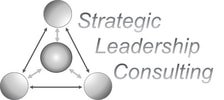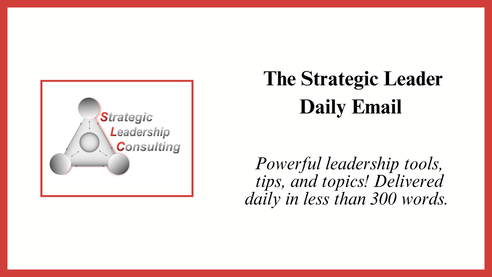|
Yesterday we talked about the four traits of a strategic leader: 1.Acting with intention on a daily basis 2.Solving problems 3.Enacting relentless incremental change 4.Developing people We discussed how these four traits interact with each other and amplify the daily actions that leaders take. We also enumerated four barriers and today we’ll look at the first two.
It is not only that the treadmill of the urgent consumes our time, but it actually degrades our ability to engage in strategic action. In fact, the first goal of becoming a strategic leader is to get off the treadmill of the urgent! First, when we focus on the urgent, we make it a higher priority that the important. Obviously, there are many issues that are both urgent and important but focusing on the urgent leads us to be reactive and over time we react to urgent matters even if they are not important! In fact, we may even consciously put off important matters in favor of urgent, but not important, issues.
Second, consistently working on urgent tasks uses a different set of skills than acting strategically, and our strategic skills atrophy over time. We become really good at reacting to crises, but we forget how to invest proactively. Our patience and ability to dissect and reconstruct complex issues degrade, creating a negative cycle in which we invest more time in what we are good at (responding to crises) and less in what we aren’t good at (investing proactively). Finally, urgent tasks usually are not strategic tasks. Urgent tasks are, by definition, focused on the present, while strategic tasks are focused on the future. Further, urgent tasks are generally more about symptoms as opposed to root problems and thus perpetuate a cycle of having to deal with the same issues multiple times. A focus on urgency creates an infinite loop of treating the same reoccurring symptoms with the result that we are in perpetual motion yet never moving forward. Ironically, many leaders actually thrive on urgency. Running from task to task all day long, a leader can feel as if they have achieved many things. The problem is that urgent is not the same as important. Our inclination to respond to the urgent often means that we ignore the important. So, at the end of the day we have checked off many items, but nothing has really changed. The second barrier is a lack of clear purpose. This can be puzzling as it seems like our purpose is obvious. Educational leaders’ purpose is to help students learn. Health care administrators help patient heal. Sales leaders help customers fulfill a specific need. However, the complexity of organizations leads to confusion about what the real purpose of the organization is. Most organizations have multiple and sometimes conflicting purposes. For example, in any organization, these different purposes could be at work:
These don’t even include the purposes that individuals bring to the organization. For example:
With multiple purposes, what’s important may not be clear because the question becomes “important to whom?” While these barriers are significant, there is a way forward. In coming weeks, we will walk that path, but tomorrow we’ll look at the other two barriers, infatuation with big change and a lack of training and skills. Before you go, think about the purpose of your organization as well as the purpose of your own leadership. Are they clear? Do they align? What about those you serve? Do they share your clarity (or confusion)? Do good and be well, Frederick
0 Comments
Leave a Reply. |
Categories
All
Archives
July 2024
|



 RSS Feed
RSS Feed